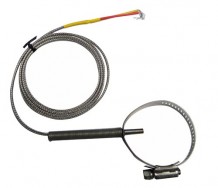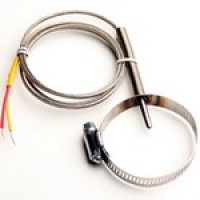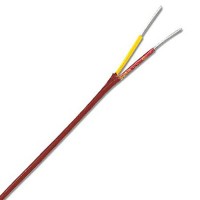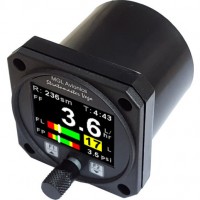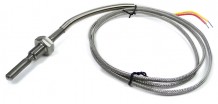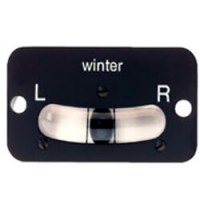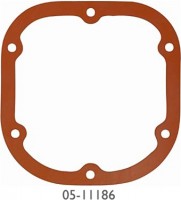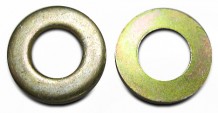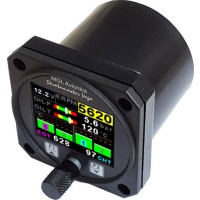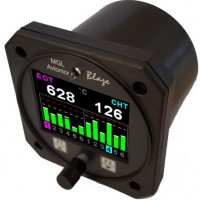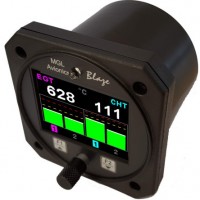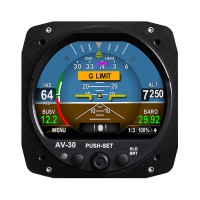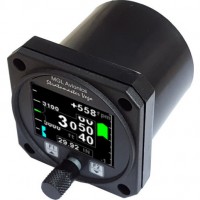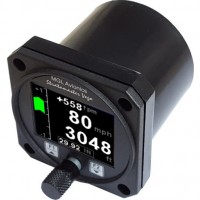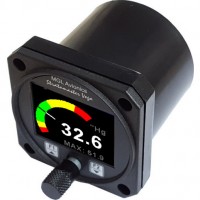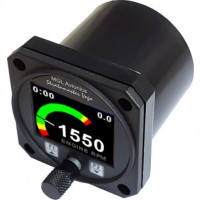MGL Vega TC-4 Thermocouple EGT / CHT Indicator
MFR Model# TC-4
Overview
|
The TC-4 for Experimental / LSA aircraft is a 2 1/4" Sunlight readable 4 channel thermocouple color display instrument. Instrument can be configured for 5 different temperature display screens. The display can be configured to group EGTs and CHTs to common settings or each thermocouple channel can be independently displayed with individual programmable high alarm and probe type. The TC-4 also has a trend graph and maximum values display screen. The TC-4’s high accuracy is due to its built in thermocouple linearization curves and cold junction compensation techniques. Temperature probes can be common J, K or E type thermocouple probes as used in CHT and EGT senders. Temperatures can be displayed in degrees Celsius or degrees Fahrenheit from -100ºC to 1200ºC (-148ºF to 2192ºF). The TC-4 also features a built in engine leaning facility which allows the pilot to optimize the fuel mixture according to peak EGT temperatures as well as a cruise mode facility to provide instant identification of changing EGT/CHT trends. The TC-4 can also be interfaced via the CAN bus to an external RDAC unit (Remote Data Acquisition Unit). This allows for easier installation as the RDAC unit is normally mounted in the engine compartment. |
WARNING: Cancer and Reproductive Harm - www.P65Warnings.ca.gov. |
Features
- 5 different temperature display screens
- Supports J, K and E type thermocouple probes
- Temperatures can be displayed in ºC or ºF from -100ºC to 1200ºC (-148ºF to 2192ºF)
- High accuracy: Built in thermocouple linearization curves and cold junction compensation
- Records maximum temperatures reached for each channel
- Includes a trend graph display of each thermocouple channel
- Engine leaning function according to peak EGT temperatures
- Engine cruise mode to instantly identify changing EGT/CHT trends
- External RDAC interfacing via the CAN bus
- An external output activates when a high alarm condition has been reached
Documents
Reviews
Very nice little instrument for the money. Despite its small size, the readout is very easy to see.
MGL Stratomaster Vega 2-1/4 4 Channel Temperature Display
Installed this instrument into my RV-9. All four cylinders were connected to the instrument with bayonet probes. It installed in minutes in a, now, unused locaction. I connected the wiring and the probes, turned it on and it fired right up indicating the current OAT. Used the manual to set it up for my desired displays and it was very easy. Im considering getting another for my EGTs.
Installed fine, but does not operate as expected. Useful if you only want to see 4 temperatures total from your engine - even with the RDAC. The manual states clearly up front Up to 12 Thermocouples can be measured using the external RDAC. Yes, there is only 4 channels displayed at a time. However there is no way to cycle between those other channels simply with the rotary knob - say 4 EGT and 4 CHT sensors. To choose which 4 channels are displayed on the screen you navigate into a settings menu with several clicks. Further, you can only choose one set of bar graph labels and corresponding alarm temperatures - vs setting labels and and temp limits for each group of four channels. Why the manual advertises accepting up to 12 thermocouples with the RDAC is lost on me. Im contacting MGL in case Im mis-understanding this units function. If I am, I will update this review. I think its great hardware and MGL has a great lineup, just very confused on why the software doesnt let you rotary knob between groups of 4 with corresponding labels and temp limits. The point of adding an engine monitor vs cheap single cylinder analog gauage is to see all CHT and EGTs.
Q&A
Please note, Aircraft Spruce's personnel are not certified aircraft mechanics and can only provide general support and ideas, which should not be relied upon or implemented in lieu of consulting an A&P or other qualified technician. Aircraft Spruce assumes no responsibility or liability for any issue or problem which may arise from any repair, modification or other work done from this knowledge base. Any product eligibility information provided here is based on general application guides and we recommend always referring to your specific aircraft parts manual, the parts manufacturer or consulting with a qualified mechanic.
No, you will have to purchase CHT probes separately, please view see # 11-05562
The thermocouplers attach to the unit via a DB9 male connector.
Per the Manufacturer: No, you will need to purchase the EGT probes separately.
A harness is provided for this unit to help with the installation, however these are crimp style connectors
It is recommended to use the probes suggested in the installation manual. Please review the document found in the Documents section of the webpage.


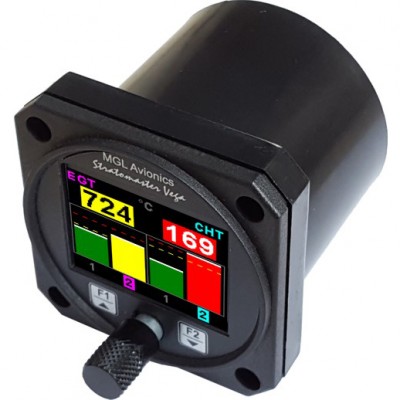





 FREE Shipping
FREE Shipping

